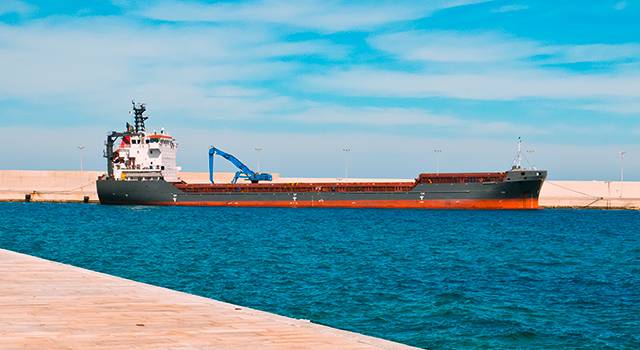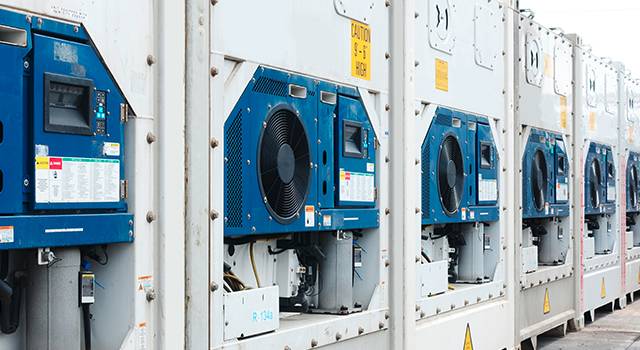QUIET – A DNV GL class notation for airborne external noise from ships
The DNV GL class notation QUIET, to be launched on 1 July 2019, addresses the external noise emitted from a vessel that is either berthed in port, idle or in working condition. Ensuring the practicality of measurements is a priority for DNV GL.
In recent years, noise emitted by ships has become a prioritized environmental concern for sea ports. Tightening regulations reflect increasing public awareness of the health effects of noise and an international trend towards developing housing projects in waterfront areas, including port vicinities.
“Ships are in many ways the most challenging noise source in ports,” knows Åshild Bergh, Senior Principal Engineer, Noise & Vibration at DNV GL. “Firstly, the technical and acoustic characteristics of ship noise make it problematic. As a rule, ships run their auxiliary engines to produce the electricity they need while at berth,” Bergh explains. “This engine noise is low-frequency, which makes it more annoying to the ear. Its long wavelengths mean that muffling it requires big, space-consuming silencers on board,” Bergh adds. Unmuffled engine noise penetrates standard noise walls, soundproof windows and other conventional noise-proofing on nearby buildings.
Ship noise on board and in the water
The International Maritime Organization (IMO) considers ship noise primarily as an occupational health and ecological issue and is developing recommendations for noise emissions to water to protect the marine fauna. Noise emissions to air are not on agenda of the IMO at the moment, and no regulation should be expected in the near future. These noise emissions from maritime traffic are only regulated on a national level and through the environmental permits of ports. Noise legislation and regulations vary from country to country, or even among different ports in the same country. This makes it difficult to implement standardized noise reduction measures.
 |
Measuring noise
There are various approaches to coming to grips with the noise challenge. Providing alternative power sources, such as shore power, is very expensive and will not always reduce noise levels sufficiently. Another option for ports to reduce the noise impact from ships is to place the noisiest ships in areas furthest away from the most exposed residential areas. Adjusting a part of the port dues to the noise emitted by individual ships can influence on-board maintenance and ship design. This requires appropriate methods to assess ship-specific noise levels. To date, no standards for measuring airborne external ship noise are available.
Several projects addressing airborne noise from berthed ships have been carried out in recent years. The most recent one is the NEPTUNE (Noise Exploration Program To Understand Noise Emitted by seagoing ships) project, initiated by a number of ports in Europe, Australia and New Zealand as well as the Port of Vancouver. The goal was to provide “tools to support a sustainable port development by reducing nuisance related to seagoing ships”. The main results of this project so far have been a Measurement Protocol and a Best Practice Guide describing effective measures, including “noise awareness methods”. The EU project SILENV covered both on-board noise, underwater noise and external airborne noise. It likewise developed a measurement protocol for airborne external noise from ships. This method is more comprehensive than the one developed by the NEPTUNE project.
Another result of the increased focus on airborne noise from ships is the decision by the World Port Sustainability Program (WPSP) to include external airborne noise in the Environmental Ship Index (ESI) formula as of 2020, which allows for a possible reduction of port dues for quiet vessels.
 |  |  |
A class notation for human comfort
With these existing initiatives in mind, DNV GL has developed a new voluntary class notation QUIET(I/W[Ls, Lp, d, h]) for airborne external noise from ships.
“This notation will be a useful tool for both ports and ship owners,” says Bergh, explaining the benefits of the new notation. “Port authorities may use the information provided by the class notation in their planning work to ensure compliance with relevant noise regulations, and ship owners have the possibility to demonstrate a low noise emission level to lower their port fees or get access to the most attractive berthing locations in port.”
QUIET: A formula for noise assessment |
The QUIET notation specifies four important parameters related to external airborne noise for Idle (I) or Working(W) condition:
Two different measurement procedures are available: sound pressure measurements along each side of the vessel, or source-level measurements of the most important noise sources on board combined with modelling to calculate the relevant sound pressure levels. The outcome of both procedures is the maximum sound pressure levels at a distance of 100 m on each side of the vessel. |











